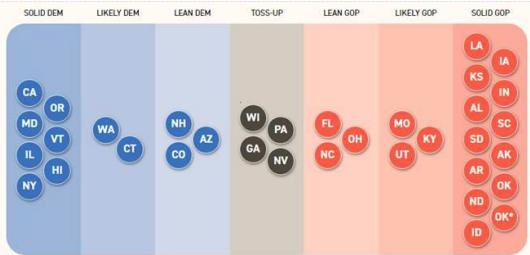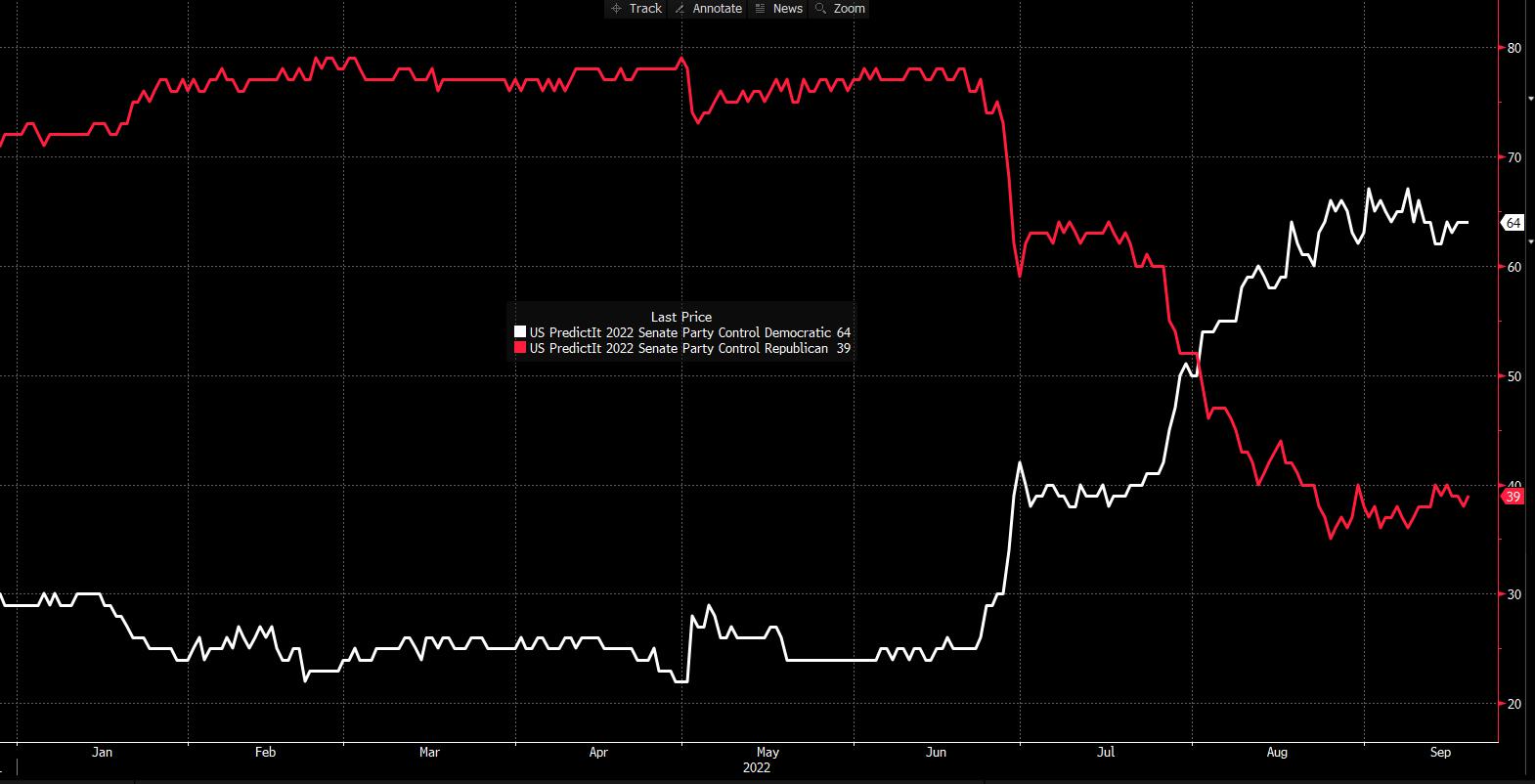- English
- عربي
Trading the US midterm elections - what's important for traders

Political events have been problematic for market players to price risk around and we’ve seen some real volatility shocks in the last 10 years or so. So, as the US midterm elections loom large, we question whether this event holds the potential for significant volatility and how it could affect the trading environment.
On the face of it, the evidence suggests the midterm election is unlikely to be a major volatility event – however, as the US economy slows and the prospect of a recession increases, the outcome of the midterms may matter more – to anyone interested in the connection between politics, fiscal policy, and financial markets, the midterm election is well worth putting on the radar.
The midterms matter because:
- It will shape voting intentions/trends for the 2024 election
- Will impact the potential for fiscal support should the US enter a prolonged recession
- The debt ceiling could become a market thematic in 2023
A recap of proceedings
The US midterm takes place on 8 November – as is typically the case first-term governments poll poorly in the midterm losing between 18-24 seats in House, and three in the Senate.
It was only in late June that we were staring at the Republicans (REP) comfortably taking both chambers of Congress (the House and Senate). However, a few factors (for example, abortion rights and shifts from younger voters) have impacted polling and swung the race wide open, specifically in the race for the Senate.
Many are looking at the voting trends – voter turnout seems important, as does demographic preferences and how this shapes expectations for the 2024 Presidential election – where the prospect of Donald Trump / Ron De Santis vs Biden / Kamala Harris looms large.
The Senate vote – as it stands the Republicans (REP) hold 50 seats, the Democrats (DEM) hold 48 seats, with 2 seats held by independents who caucus with the DEMs – Vice President Kamala Harris sways the vote to give the DEMs the balance of power.
This election there are 35 out of 100 Senate seats up for election – 21 of the 35 seats are currently held by the REPs and 14 held by the Dems. The Cook Report has a good piece here on how this is shaping up - https://www.cookpolitical.com/ratings/senate-race-ratings
Of the 21 REP-controlled seats up for election – 6 are either considered to be contestable, the others should remain held by REP Senators.
Of the 14 seats held by the DEMs, there are five considered to be contestable. The rest should remain held by DEM senators.
So, of the 35 seats in the running, there are four true ‘toss-up’ seats that could define the outcome of the Senate vote – Wisconsin (REP), Penn (REP), Georgia (DEM) and Nevada (DEM).

It’s worthy of note, that as of mid-September, Democrat Senators have done better with fund-raising too raising $533m v REP senate candidates $505m. That may be important.
With these dynamics in play, we see that Prediction markets have DEMs ahead, with a 64% probability of maintaining control in the Senate. Betting markets still have the REP and ‘no majority’ as the front runners.

The battle for the House of Reps – there is 435 seats in total, and all are up for grabs – The DEMs currently have the majority with 221 seats. 218 seats, therefore, are needed for a majority.
REPs are largely expected to get over the line, with a margin between 220-229 as the consensus outcome. The betting markets have the REP’s as clear favourites here ($1.3 v $3.0)
Market impact
According to PredicIt, the most probable scenario is that we’re looking at a similar set-up as we saw between 2011 to 2014, with the DEMs controlling the Senate and the White House, and the REP’s having control in the House. A close second is Biden in the White House and the REP in both chambers of Congress, a scenario we saw between 2015-16.
With political gridlock and potentially dysfunctional Congress, the markets may have to contend with:
- Concerns around the ability to fund the government, with a re-run (lite) of the 2011 US debt ceiling concerns also a potential landmine
- Reduced fiscal support – as the probability of a recession increases will there be the required fiscal support?
Many will have 2011 still in their minds, when the US debt ceiling became the clear market thematic, with S&P downgrading the US credit rating. A split Congress could see the debt ceiling debacle remerge in 2023 as a growing market theme, although most market participants have a view that government shutdowns and debt ceiling debates always get resolved eventually and the US won’t default on its debts.
We’re looking at political gridlock, either by a split Congress or Biden in the WH and both chambers held by REP – this means very little fiscal policy changes passing unless we see a DEM clean sweep and that seems very unlikely. One could argue a dysfunctional Congress means headwinds for the USD, although that is certainly not a theme to express now - short USD could well be a big trade for 2023, where limited fiscal support and a disinflationary impulse lead to a strong rally in US Treasuries.
These factors aside, the market would be far more concerned if the US Treasury (UST) Department and Janet Yellen’s position were going to be affected, especially given the USTs impact on Quantitative Tightening. This is also true if there was a possible shift in stance around China, again that is unlikely.
Conclusion
On the face of it the midterms will be a huge talking point, and a must-watch for voter turnout and voting trends – but at first blush, with limited expectations of future fiscal stimulus (in any scenario), those hoping for the midterms will be a major volatility event may be disappointed. Still, with so many macro concerns yet to play out, the midterms come at a time when uncertainty is already high, and the elections may just compound an already nervous market – we shall see.
Related articles
The material provided here has not been prepared in accordance with legal requirements designed to promote the independence of investment research and as such is considered to be a marketing communication. Whilst it is not subject to any prohibition on dealing ahead of the dissemination of investment research we will not seek to take any advantage before providing it to our clients.
Pepperstone doesn’t represent that the material provided here is accurate, current or complete, and therefore shouldn’t be relied upon as such. The information, whether from a third party or not, isn’t to be considered as a recommendation; or an offer to buy or sell; or the solicitation of an offer to buy or sell any security, financial product or instrument; or to participate in any particular trading strategy. It does not take into account readers’ financial situation or investment objectives. We advise any readers of this content to seek their own advice. Without the approval of Pepperstone, reproduction or redistribution of this information isn’t permitted.

